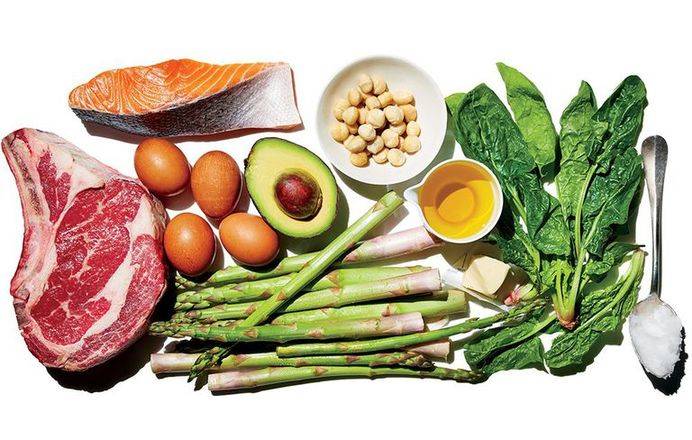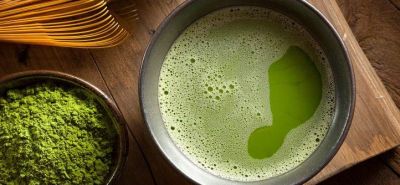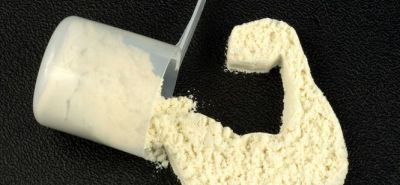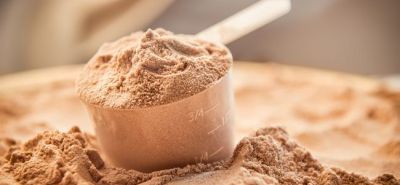Ketogenic Diet: Eat More Fat, Lose More Fat
Last Updated on June 3, 2023
If you research different ways to lose weight, you’ll come across various diets and lifestyle tweaks to turn your body into a fat-burning machine.
Exercising and cutting calories aren’t the only ways to lose weight. Cutting carbs can help you achieve a state called ketosis, which tricks your metabolism into burning more fat.
Ketosis carries some risks, but it may lead to fast weight loss.
What Is Ketosis, and How Does It Affect Weight Loss?
Food is your body’s primary source of energy, and three main nutrients in foods supply your body with this energy. These are carbohydrates, fat, and protein. Typically after eating a meal, your body will first break down carbohydrates from foods, and then fat and protein. Ketosis is a natural metabolic state that occurs when your body doesn’t have enough carbs (or glucose) for energy, so it burns fat instead.
Ketosis happens when your carbohydrate intake is low. As your body breaks down fat, it produces an acid called ketones or ketone bodies, which becomes your body and brain’s main source of energy.
Because ketosis shifts your metabolism and relies on fat for energy, your body can burn fat at a higher rate. Translation? You may reach your weight loss goal sooner than if you didn’t cut carbs at all.
The Ketogenic Diet & How Do You Achieve Ketosis Successfully?
With this diet, about 75 percent of your daily calories come from fat, 20 percent from protein, and 5 percent from carbohydrates. Certain foods can be eaten freely on this diet, whereas other foods need to be limited or avoided completely.
In achieving Ketosis, you’ll need to severely minimize your intake of carbohydrates, eating no more than 20 to 50 grams of carbs per day. A single medium pear, for example, contains 26 g of carbs, and even foods that aren’t generally considered high in carbs — such as nuts and nonstarchy veggies — contain a small amount of carbohydrates, and so will need to be limited or avoided on this plan. Also, you should limit your intake of protein to about 20 percent of your total daily calories. This is important because when you consume more protein than you need, your body converts the excess protein into carbs through a process called gluconeogenesis. This process pushes your body out of ketosis. And 75 percent of your daily calories must come from Fat.
Fasting is another way to achieve ketosis. This doesn’t suggest going days without food, but rather intermittent fasting. You can eat for eight hours and then fast for 16 hours, or eat a low-calorie diet for a few days (about 1,200 daily calories if you’re a woman and 1,500 daily calories if you’re a man). As you take in less food, your body uses more of its fat stores for fuel.
So, the basic rules of a keto Diet to achieve ketosis are:
- Consumption of 20-50 grams of net carbs per day (5 percent of your daily calories)
- Moderate protein intake (about 20 percent of your daily calories)
- High fat intake (75 percent of your daily calories)
Keep in mind, this diet doesn’t only focus on eating fewer carbs. It also focuses on eating more real foods and fewer processed foods.
What Is A High Protein Ketogenic Diet?
It’s similar to Standard Ketogenic Diet, but with additional protein. The ratio is often 60% fat, 35% protein and 5% carbs.
The high protein intake and high ketone levels may help minimize muscle loss, especially if you lift weights.
Be careful eating too much protein. This can be bad for ketosis and keep you from reaching your goals.
How Exactly Do You Know if You’re in Ketosis?
Checking your ketone level is one way to know if you’re in ketosis. This metabolic state usually kicks in after three or four days of restricting your carbohydrate intake or going through periods of intermittent fasting. You don’t have to visit a doctor to measure your level. Pick up a ketone urine test from a nearby drug store, or use a blood sugar meter that’s capable of measuring ketones.
A normal blood ketone level is under 0.6 millimoles per liter (mmol/L). Any level higher than this can indicate a state of ketosis.
Physical signs and symptoms of ketosis include:
- Weight loss
- Loss of appetite
- Increased energy, though energy may be decreased in the first few weeks on the diet
- Fruity smelling breath (halitosis)
- Constipation or diarrhea
Foods to eat on the keto diet include:
- Meat, including beef, lamb, pork, poultry, fish, and seafood (preferably wild-caught)
- Eggs
- Cheese
- Healthy oils, such as olive, avocado, or coconut oil (just keep in mind that although coconut oil is permitted on the keto diet, it is linked with raising LDL, or “bad,” cholesterol levels)
- Avocados
- Nonstarchy vegetables, like celery, asparagus, leafy greens, cucumber, and zucchini
- Nuts and seeds
Foods to avoid on the keto diet include:
- Grains, such as rice, quinoa, white potatoes, pasta, bread, and pizza
- Processed foods
- Artificial sweeteners
- Milk
- High-carb fruit, including bananas, pineapples, tangerines, and grapes
- Refined oils
Benefits & Adverse Effects Of A Keto Diet
The ketogenic diet has been linked to reduced symptoms of Alzheimer’s disease. It may also help manage Parkinson’s disease, control seizures in children with epilepsy, and, according to the results of a small pilot study, may even improve symptoms of polycystic ovary syndrome (PCOS).
But some research exposes the potential health risks of this diet. For example, a low-carbohydrate, high-protein diet can be unhealthy due to the risk of increasing bad cholesterol and triglycerides. One study even suggests that eating a low-carbohydrate diet could lead to insulin resistance, increasing the risk for type 2 diabetes.
It’s also important to note there have been no long-term studies on the ketogenic diet, nor has there been research that details what may happen to the body if it’s in a constant state of ketosis itself. But given how the body needs carbs to function properly, diets that are based on fat burning may lead to nutritional deficiencies, and supplements and multivitamins are recommended because you’re cutting out entire food groups, warns Alyssa Rothschild, RDN, who is in private practice in New York City.
Rothschild further explains how following a ketogenic diet for extended periods of time could also lead to osteopenia, which is a precursor to osteoporosis, a disease that’s characterized by bone loss.
“When the body is in ketosis, it lowers the blood pH level, causing the blood to become acidic. To counter this, the body takes calcium away from the bones,” she says. “The increased acidity in the body also increases uric acid, which can lead to the formation of kidney stones.” Therefore, it goes without saying that due to the stress an extremely low-carb diet can have on the body, those with kidney damage shouldn’t try to achieve ketosis or attempt the ketogenic diet.
Also worth noting is women who are pregnant or breast-feeding, people on certain diabetes medication and insulin, those with a low body mass index (BMI), children, individuals with gallstones, and those people who have had their gallbladder removed should not try the ketogenic diet.
Is Ketosis Safe and Healthy for Everyone?
The long-term effects of constant ketosis haven’t been thoroughly investigated. But it appears to be generally safe for most people, at least as a short-term weight-loss solution.
Again, it’s important to note that this state can cause a high level of ketones in the bloodstream, which can make the blood acidic, a dangerous medical state.
Everyone’s body responds differently to ketosis. So while some people are able to produce insulin during ketosis to slow down ketone production and avoid a toxic level, others can’t. Ketosis becomes dangerous when blood turns acid. Always speak with your healthcare provider before making any changes to your diet.
What to Know About Ketosis and Diabetes
Following the ketogenic diet and achieving ketosis may be beneficial if you’re living with type 2 diabetes and need to manage your symptoms. Limiting carbohydrate intake is crucial with type 2 diabetes because too many carbs can increase blood glucose levels, which can damage blood vessels and lead to vision problems, kidney problems, and nerve problems.
Because you can reach ketosis by restricting your carb intake, this diet may lower your blood glucose levels naturally. And if you’re overweight and living with diabetes, eating fewer carbs may help you lose excess pounds, which is another way to gain control of your blood glucose.
Ketosis is an option for many people with type 2 diabetes because they still produce insulin, which helps their body maintain a safe level of ketones in the blood. If you’re considering trying ketosis or the ketogenic diet with type 2 diabetes, be sure to consult your healthcare provider first to ensure it’s safe for you. This eating approach may interfere with some types of diabetes medication or be inappropriate for you if you have certain diabetes complications, such as kidney damage.
Also, achieving ketosis with type 1 diabetes can cause a dangerously high level of ketones in the bloodstream and trigger diabetic ketoacidosis. Therefore, if you have type 1 diabetes, you’ll want to avoid putting your body in ketosis to avoid this potentially life-threatening health emergency.
Signs of diabetic ketoacidosis include a high blood glucose level, a high ketone level, dehydration, frequent urination, nausea, difficulty breathing, and dry skin. If you have type 1 or type 2 diabetes, test your blood glucose level regularly before and after meals, and make sure you check your ketone level whenever your blood sugar is higher than 240 milligrams per deciliter (mg/dL).
A ketone level between 1.6 and 3.0 mmol/L is high and increases the risk of diabetic ketoacidosis. Drinking fluids and taking your insulin can bring down your ketone level. If your level doesn’t decrease or continues to rise, go to the hospital. A ketone level higher than 3.0 mmol/L is a medical emergency.
The Takeaway: Is Ketosis Safe for Weight Loss and Overall Health?
Shifting your metabolism and achieving ketosis may speed up weight loss and result in other health benefits, like more energy and a lower blood pressure. But while ketosis is a preferred nutritional state for some people, it isn’t recommended for everyone — and it’s not a good long-term eating approach due to its restrictive nature, which may lead to potentially dangerous nutritional deficiencies.
Before trying to achieve ketosis, be sure you talk to your doctor to make sure your medication or any underlying health issues won’t put you at risk for further health issues or potentially a health emergency.
| A Sample Keto Meal Plan For 1 Week
To help get you started, here is a sample ketogenic diet meal plan for one week: Monday Tuesday Wednesday Thursday Friday Saturday Sunday Always try to rotate the vegetables and meat over the long term, as each type provides different nutrients and health benefits. Supplements For A Ketogenic Diet Although no supplement is necessary, some can be useful. MCT oil: Added to drinks or yogurt, MCT oil provides energy and helps increase ketone levels. |
Reference:
https://www.everydayhealth.com/diet-nutrition/ketogenic-diet/ketosis-what-it-its-safe-how-achieve-it-symptoms-more/
https://www.healthline.com/nutrition/ketogenic-diet-101







Leave a Reply